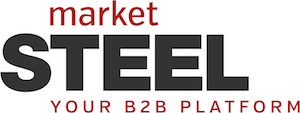
Russel acquires Boyd Metals
North American service centre chain Russel Metals plans to acquire the southern US metal service centre chain Boyd Metals in a $110 million deal, Kallanish understands.
Boyd Metals has five service centres operating in the southern US with two locations in Arkansas, one location in Missouri, one location in Oklahoma, and one location in Texas.
According to Russel, the recent acquisition is part of the company’s ongoing repositioning efforts to increase both its returns and revenues.
“We believe their culture, experienced management team and business platforms are very much aligned with our existing business as we look to further expand our US service centre footprint. We look forward to having all of the Boyd employees as part of the Russel family,” says Russel ceo John Reid.
Recently, Russel earned CAD 132 million ($106m) on sales of CAD 1.11 billion in the third quarter of 2021 (see related story).
Zach Johnson USA

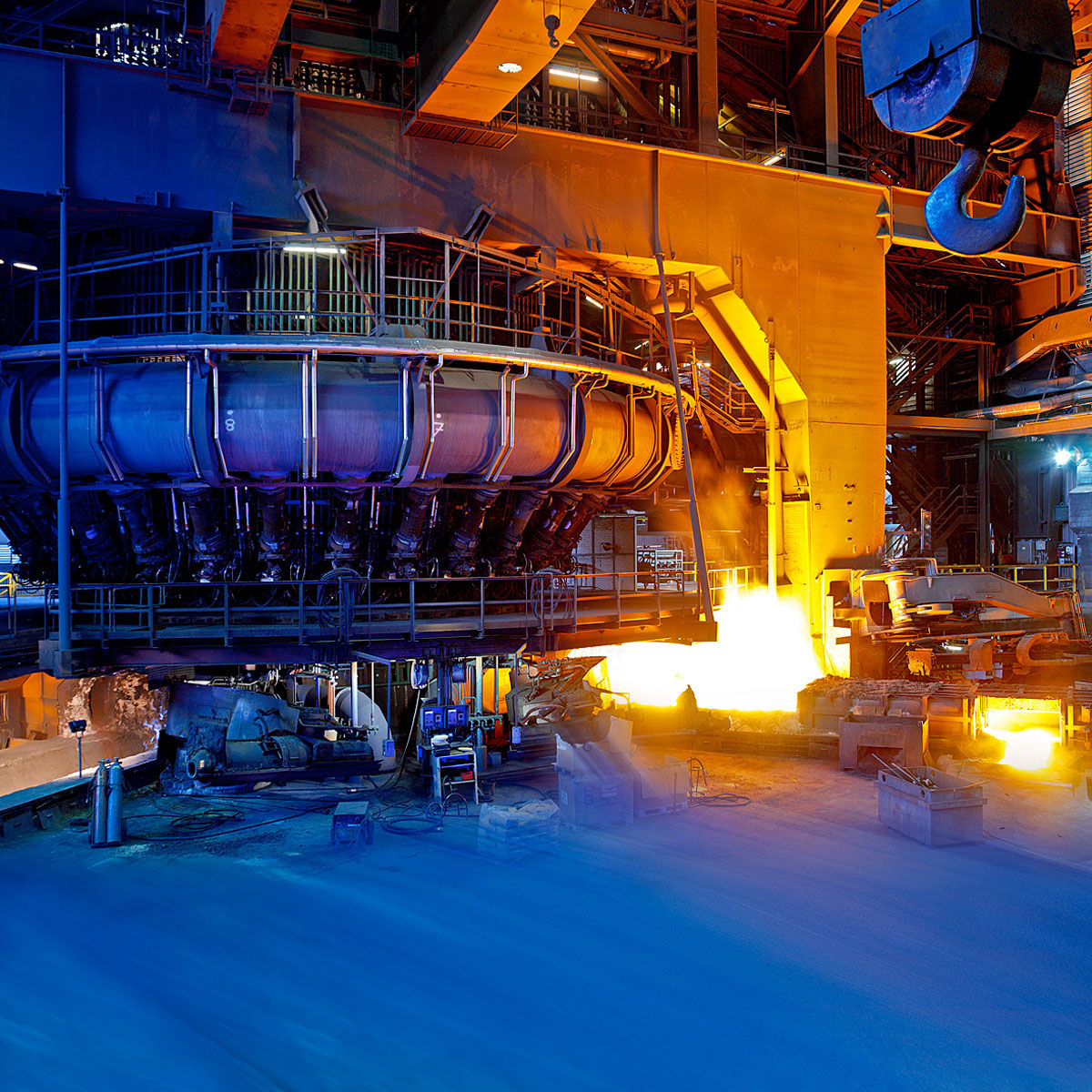
German crude production reaches 30mt
Germany’s mills produced 29.91 million tonnes of crude steel in January-September, Kallanish learns from the latest figures provided by steel federation WV Stahl.
Following the summer months, production in September picked up to 3.34mt, two thirds of which were made by the oxygen route, one third by the EAF route. Apart from summer shutdowns mostly at EAF mills, the three months to September were also marked by a reline of a big blast furnace at thyssenkrupp, which resumed production by October.
Assuming a healthy level of demand from consumer industries, it is therefore likely that output in subsequent months will be altogether higher, and that annual production might reach the mark of 40mt.
Christian Koehl Germany

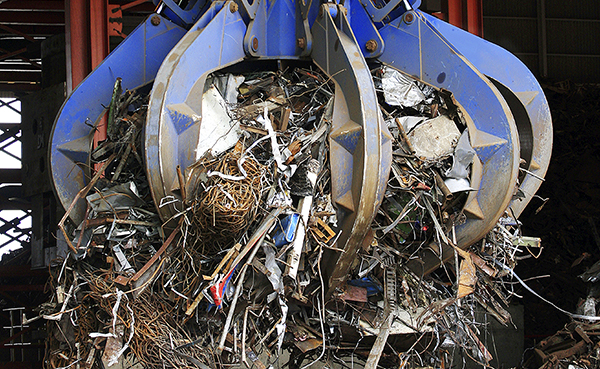
Decarbonisation ‘disconnects’ scrap from raw materials: BIR
The push to reduce carbon emissions will create “a large opportunity” to grow scrap’s share in current steelmaking raw materials beyond its current average of 30%, said McKinsey & Company’s Dr Steven Vercammen in a Bureau of International Recycling (BIR) webinar this week.
The key challenges, added Vercammen, senior knowledge expert at the consultancy, are to extract more scrap from the system and to enhance quality.
Having traditionally followed iron ore and coking coal trends, scrap prices are likely to “disconnect” as a result of “this whole decarbonisation pressure and the importance of using more scrap to be able to reduce CO2 emissions”, said Vercammen.
Prices of value-added scrap will increase, agreed Dr Benedikt Zeumer, McKinsey partner. “Recycled materials will be much more favourable in terms of CO2 emissions and probably also energy intensity,” he contended.
“A few years ago, there was concern that China might become a huge scrap exporting country, with the effect that it would hurt scrap prices around the world,” observed Scott Newell, chairman of US-based Newell Recycling Equipment and vice chairman of China Recycling Newell Equipment.
“The opposite is what is happening. China will need to import scrap rather than iron ore and coal in order to reach the goals of a cleaner environment and more cost-effective steel production,” he added.
Around 630 million tonnes of steel scrap are recycled worldwide every year, preventing nearly 950mt of CO2 emissions and making “a decisive contribution to climate protection”, confirmed BIR Ferrous Division statistics advisor Rolf Willeke. Adding in scrap usage within the foundry sector, annual CO2 emission savings amount to over 1 billion tonnes, Kallanish notes.
Willeke highlighted a 47.1% surge in China’s steel scrap consumption to a world-topping 137.95mt in the first six months of 2021. This reflects the objective announced in China’s latest Five-Year Plan to reduce CO2 emissions in crude steel production through increased steel scrap usage.
George Adams of SA Recycling said mills in the US “continue to make record profits on wide margins between scrap and new steel prices”. Barring unforeseen events, he added, “the US scrap market can be expected to remain steady and range-bound through to the end of 2021 on continued logistical delays and steady new steel demand”, with any bias towards “a slight upside, especially for shredded”.
Scrap prices in Japan have remained “in a rather high range” over recent months whereas exports have been on a downtrend, according to Ted Taya of Shinsei Scrap Co.
Denis Reuter of TSR Recycling in Germany said the outlook appears “difficult” for the remainder of the year, not least because steel production cuts of 15-20% are projected for this period in response to soaring energy prices.
Burcak Alpman Turkey

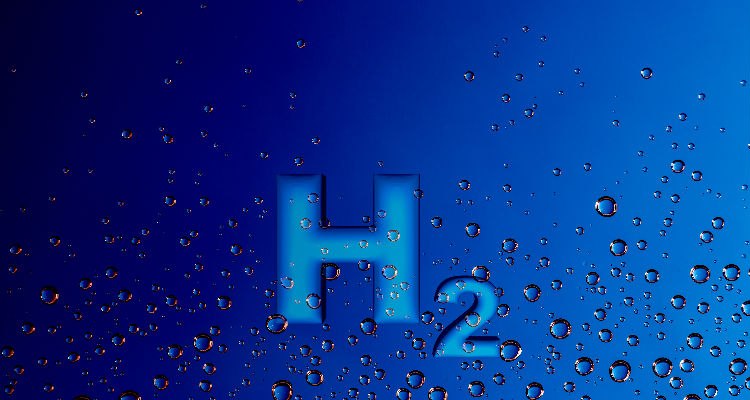
Acciaierie d’Italia to decarbonise through hydrogen
Acciaierie d’Italia and gas operator Snam will start joint research to develop certified steel products for the safe transport and storage of hydrogen. So says Snam technical business unit hydrogen head Dina Lanzi in a video presentation of the Taranto steelworks decarbonisation seen by Kallanish.
A memorandum of understanding signed between the two firms will involve progressive decarbonisation of the Taranto’s steelworks, moving from natural gas to renewable gases such as biomethane and green hydrogen. Acciaierie d’Italia and Snam will create synergies on their respective research and development centres to develop a system of production, distribution and storage of hydrogen, Lanzi says.
In Taranto, Snam implemented a hydrogen blending test at 10%. Now the company signals a successful test at 30%, a confirmation that the Taranto plant is ready for hydrogen, The two firms will accelerate R&D, “trying to understand which retrofitting actions will have to be implemented on the existing equipment to increase the hydrogen percentage in the blending”, Lanzi says.
The collaboration will also transform the past temporary hydrogen blending pilot projects into permanent applications, Lanzi concludes. Taranto can support the first hydrogen mass production for industrial applications in Italy, she adds.
The plant’s decarbonisation will be financed in part by funds from the European recovery fund, Piano Nazionale di Ripresa e Resilienza (PNRR).
Natalia Capra France


EC to announce waste regs Nov. 17; EU H1 scrap exports soar 49.3%
The European Commission’s updated European Waste Shipment Regulation – which could affect ferrous and non-ferrous scrap trade – should be announced Nov. 17, a Commission spokesperson said Nov. 4.
However, nothing can yet be shared on its content, the spokesperson told S&P Global Platts in an email. The EU’s Waste Shipment Regulation has been in force since 2006, and has been updated various times, and has again been under review with industry collaborators since 2020.
Publication of the revised regulation will follow months of speculation on the possibility that the EC will restrict regional exports of both ferrous and non-ferrous scrap in order to secure local supplies of materials considered key in the metals industry’s decarbonization process and establishment of the circular economy, particularly in view of a recent surge in ferrous scrap export levels. Scrap-based production typically uses a fraction of the energy used in production using virgin materials.
Any blanket export scrap ban, particularly for ferrous scrap, is considered highly unlikely, due to the high volumes of ferrous scrap generated within the EU, particularly in heavy melting scrap, which wouldn’t be fully absorbed by the domestic EU market.
According to data released Nov. 4 by Brussels-based International Recycling Assn BIR, the EU’s ferrous scrap exports in the first half of the year soared to 11.24 million mt, up 49.3% year on year, maintaining the EU’s position as the world’s top steel scrap exporter despite Brexit – the UK is also a significant exporter of ferrous scrap. Market observers note some concern over what might happen in the revision to higher Fe-yield ferrous scrap grades like shredded, bonus and plate and structural, but usually EU steel mills already pay a premium over what recyclers can achieve in the export market.
Fears of trade distortions
However, any export restrictions risk distorting traditional scrap trade flows as they could push up international market prices at the same time as reducing regional prices within the EU, which might discourage regional scrap collection, industry sources have said. In recent months, prices for regional ferrous scrap exports to Turkey, the world’s biggest ferrous scrap importer, soared to record levels exceeding $500/mt on supply chain disruptions and growing demand from Turkey’s growing electric arc furnace-based steelmaking sector. Ferrous scrap demand is set to grow worldwide in the coming years as steelmakers strive to expand production via EAFs, whose production is less carbon-intensive than from blast furnaces, which use coal and iron ore as raw materials.
Market sources have nonetheless indicated that Turkey, in its role as the largest ferrous scrap importer globally, is unlikely to be affected by the current EU revision. Non-OECD countries, possibly including India and Pakistan, are more likely to be affected, sources have said.
Turkey’s overseas steel scrap purchases in the first half of the year leapt 33.2% year on year to 12.87 million mt, BIR said.
Platts assessed Turkish imports of premium heavy melting scrap 1/2 (80:20) Nov. 4 at $500/mt CFR, up $5/mt on the day.
Around 630 million mt of steel scrap is recycled worldwide every year, preventing nearly 950 million mt of CO2 emissions and making “a decisive contribution to climate protection”, BIR Ferrous Division’s Statistics Advisor Rolf Willeke was cited as saying in BIR’s Nov. 4 statement. Adding in scrap usage within the foundry sector, annual CO2 emission savings are seen to amount to over 1 billion mt.
Willeke highlighted a 47.1% year-on-year surge in China’s steel scrap consumption to as much as 137.95 million mt in the first six months of 2021. According to the BIR official, this reflects the objective announced in China’s latest Five-Year Plan to reduce CO2 emissions in crude steel production through increased steel scrap usage.
Non-ferrous
Possible curbs by the EC on regional exports of non-ferrous metal scrap could reduce international metal recycling rates, running counter to circular economy principles, according to speakers at BIR’s non-ferrous metals division forum this week. Traditional importers of scrap could go short of metal supplies and be obliged to source more primary metal to meet their requirements as a result, BIR officers said.
BIR sources indicated the EC revision of waste export is based on environmental and not trade considerations, with the aim of curb exporting scrap to countries that don’t meet the same environmental standards as EU countries.
— Diana Kinch and Viral Shah


UK car registrations fall to weakest Oct since 1991: SMMT
New car registrations in the UK dropped 25% year on year in October to 106,265 units, the lowest October volume since 1991, according to data released Nov. 4 by the Society of Motor Manufacturers and Traders.
The October volume was also to fourth consecutive month to see year-on-year drops, despite 2020 experiencing stronger pandemic restriction.
“The current performance reflects the challenging supply constraints, with the industry battling against semiconductor shortages and increasingly strong economic headwinds as inflation rises, taxes increase and consumer confidence has weakened,” SMMT CEO Mike Hawes said.
While gasoline and diesel cars fell 31% and 66% year on year, respectively, to 48,384 units and 7,028 units, sales of plug-in vehicle uptake remained positive in the month before COP26, SMMT said.
Battery electric vehicles equaling their September market share of 15.2% with 16,155 units sold, up 73% on the year. A year ago, BEVs had made up a 6.6% share of total vehicle sales.
Plug-in hybrid EVs sales rose 7.5% year on year to 8,382 units, equivalent to a 7.9%, up from the previous month’s 6.4% share and 5.5% a year ago.
However, hybrid EV sales dropped 21.5% year on year to 8,649 units, although their market share rose slightly from 7.8% a year ago to 8.1% in October.
Hawes said that almost one in six new cars registered in 2021 were “capable of zero-emission motoring, growth that is fundamental to the UK’s ability to hit its net zero targets.”
“With next year looking brighter, and even more new models expected, the continuation of this transition will depend on the preservation of incentives that overcome the affordability barrier, and the ability of the public and private sectors to increase public on street charging to allay EV driver concerns,” Hawes said.
Gasoline cars kept their majority market share of 45.5%, but this was down from 49.5% a year ago, while diesel sales only made up 6.6% of the whole market, down from 14.9% in October 2020.
While October was traditionally a quieter month after September’s plate change, KPMG UK head of automotive Richard Peberdy said in emailed comments to the media that the “gloomy picture is compounded by fewer cars rolling off production lines due to supply chain challenges, and the beginnings of shakier consumer confidence with the looming threat of interest rate rises.”
He said these factors were contributing to a booming second-hand market at the cost of new car sales.
“The impact that record high fuel prices will have on pushing motorists towards EV options shouldn’t be understated. Yet EVs aren’t insulated from the wider energy crisis. A tough winter for energy companies will make plug-in drivers think carefully about their tariffs to avoid unexpectedly high bills,” Peberdy added.
According to the SMMT data, the Volkswagen Polo was the best-selling car during October, followed by the MINI and the Nissan Qashqai.
— Jacqueline Holman

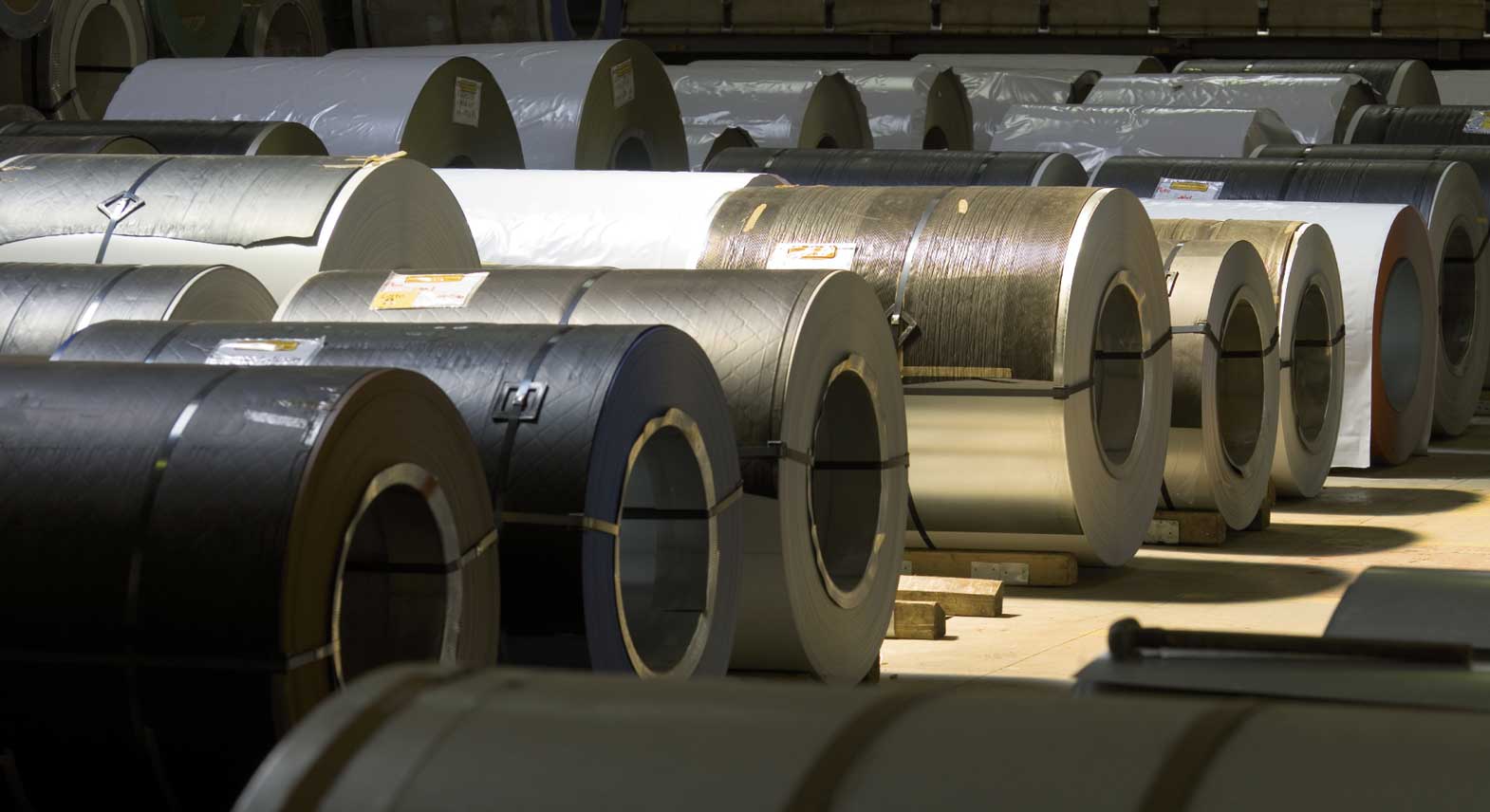
US and EU demand supports Turkey’s September HRC exports
As higher demand from the US and some EU countries continued to support Turkish mills’ hot-rolled coil export volumes in September, Turkish mill exports of HRC totaled 317,800 mt in that month, 31% higher on year, S&P Global Platts observed from the latest monthly Turkish Statistical Institute (TUIK) data.
As prices in the US market stood notably above other market prices, US buyers booked notable hot-rolled coil tonnages from Turkey again in September, and this country became Turkey’s one of Turkey’s top HRC market with 62,500 mt in that month, tenfold higher year on year.
Turkish mills’ nine-months HRC exports to the US totaled 291,500 mt, sharply up from 14,300 mt exported in January-September 2020. However, taking into account that this country was one of Turkey’s top HRC markets, importing more than 500,000 mt per year before the Section 232 tariffs, it could still be considered a low figure.
The deal that the US and EU reached on Oct. 30 to replace the Section 232 metals tariffs with a tariff-rate quota on imports from the EU, could also harm Turkish steel exports to the US in the coming months, Ugur Dalbeler, VP of the Turkish Steel Exporters’ Union (CIB) and CEO of major Turkish steelmaker Colakoglu told Platts.
Turkish mills’ HRC exports to some EU countries also remained relatively strong year on year in September.
Despite a 10,000 mt on-year decline, Italy became Turkey’s top HRC market in September with 79,000 mt, while Turkish mills HRC shipments to Belgium reached 60,450 mt in that month, although no notable HRC cargo was shipped to that country in the same period the previous year.
Spain bought 35,000 mt of Turkish HRC in September, more than sixfold higher on year, while shipments to Canada reached 25,300 mt, compared to zero in September 2020.
Turkish mills also shipped 10,300 mt of HRC to the UK in September, the latest data showed.
— Cenk Can

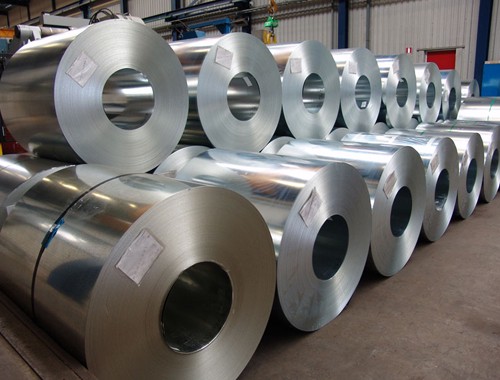
Outokumpu Q3 stainless steel deliveries rise 17.8% on year to 575,000 mt
Europe’s largest stainless steel producer Outokumpu delivered 575,000 mt of stainless steel in the third quarter, down 8% quarter on quarter, but up 17.8% from a year ago when the COVID-19 pandemic hit global demand, the company said in a Nov. 4 results statement.
This brought total nine-month stainless steel deliveries to 1.8 million mt, up from 1.6 million mt in the same period last year.
Sales revenues for the quarter increased 55.4% year on year to Eur1.95 billion ($2.2 billion), also up 4.1% quarter on quarter.
Profitability in the third quarter of 2021 was supported by increased realized prices for stainless steel in both Europe and the Americas, as well as higher ferrochrome sales price, Outukumpu said in the results statement.
However, it added that the result was burdened by increased prices driven by the strong COVID-19 rebound, an exceptionally long order book and augmented raw material prices, which offset the higher energy and consumable prices.
Outokumpu reported EBITDA of Eur295 million for the quarter, well above the $10 million reported a year ago and a 32.3% increase from the previous quarter.
The Q3 EBITDA was the best quarter in Outokumpu’s recent history, Outokumpu president and CEO Heikki Malinen said in the statement, adding that the quarter’s stainless steel deliveries were in line with expected seasonal patterns.
“The result is supported by a combination of strong market environment and our own decisive actions in strategy execution,” Malinen said.
The Business area Europe saw deliveries decrease by 13% in the quarter, but it’s EBITDA was Eur149 million, he said.
Meanwhile, the company’s turnaround at its Business area Americas continued to be successful, improving for a fifth consecutive quarter to an EBITDA of Eur84 million, with stainless steel deliveries remaining flat, Malinen said.
He added that the ferrochrome operations performed well, with a Eur64 million addition to the group’s adjusted EBITDA.
“Sustainability is at the core of our operations, and we are continuously taking steps towards our ambitious Science-Based Targets initiative of 1.5 degree emission reduction target,” Malinen said. “In the third quarter, our energy efficiency was at a good level due to high volumes and development projects.”
The company also announced an increased share of wind power in its electricity procurement during the quarter as part of its sustainability journey.
Outokumpu previously committed to reducing emissions by approximately 30% by 2030 compared to the company’s 2020 level.
The company expects its overall steel deliveries in the fourth quarter to remain stable from the third quarter, while adjusted EBITDA in the fourth quarter is forecast to be higher quarter on quarter.is expected to be at a similar level as in Q2.
“We are well on track with our strategy execution, targeting a Eur200 million EBITDA run-rate improvement by the end of 2022,” Malinen said. “Given the strong momentum, we decided to increase the target by Eur50 million to Eur250 million by the end of 2022.”
— Jacqueline Holman

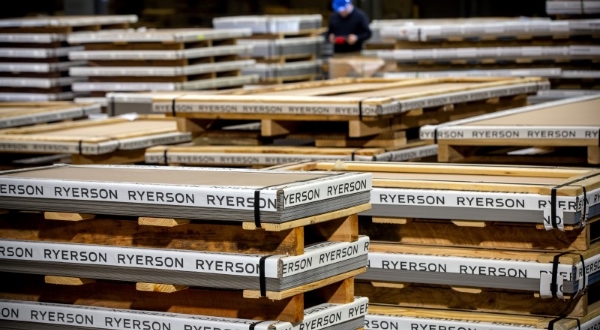
Ryerson sees supply constraints restricting reliable demand
Supply chain constraints continue to hamper realisable demand, says US-based service centre group Ryerson.
The company is optimistic about current demand trends, which it sees as growing, but it is expecting a further decline in shipments in the current quarter due to normal seasonality combined with persistent supply-side issues.
Ryerson reported a 7% quarter-on-quarter decline but a 6% year-on-year rise in shipments which totalled 519,000 short tons in the third quarter. Carbon steel and stainless steel shipments reached 399,000 st and 68,000 st, respectively, in Q3.
The company posted Q3 net income of $49.7 million on sales of $1.575 billion. Revenues were up 11% q-o-q and 89% y-o-y. Net income was down 56% from Q2 income of $113m, but up significantly from the $40m net loss posted in Q3 2020. It anticipates Q4 revenues to be $1.5-1.6 billion.
Ryerson president and ceo Eddie Lehner commended his employees for performing well “alongside the myriad of unique frictions and fractures present in the world in our operating environment that permeated the past quarter.”
During the quarter, the company began working on two new facilities in Centralia, Washington, and University Park, Illinois, Kallanish notes. It also acquired Specialty Metals Processing, a toll processor in Stow, Ohio.
Laura Miller USA

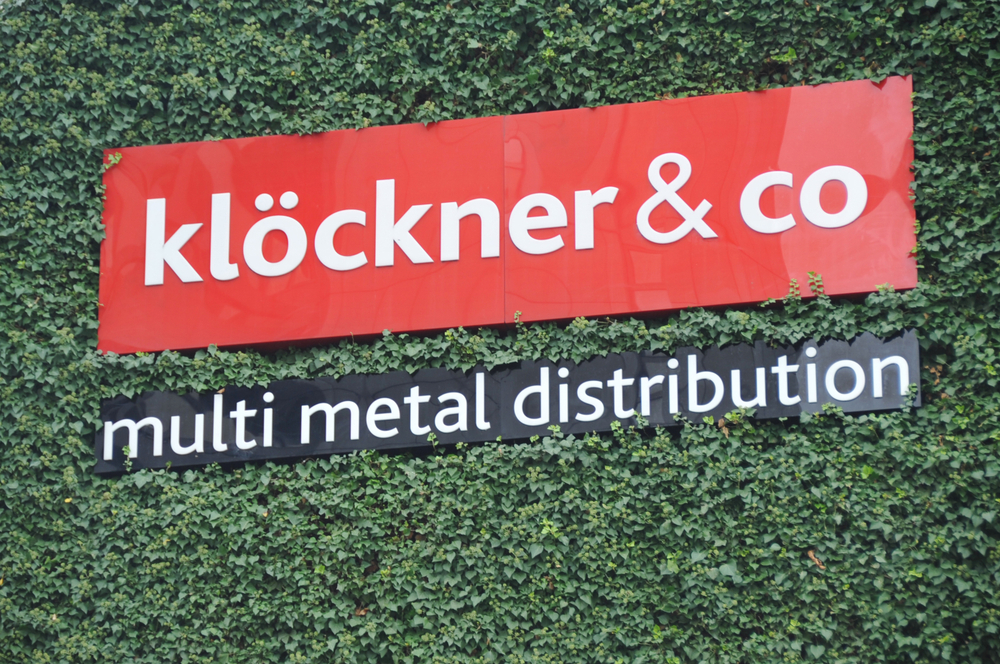
Stahl- und Metallhändler Klöckner profitiert von hohen Preisen
Guido Kerkhoff, Vorsitzender des Vorstands der Klöckner & Co SE: „Dass wir zum wiederholten Male ein Rekordergebnis vorlegen können, zeigt, dass wir die richtigen Weichen gestellt haben: Dank Projekt Surtsey haben wir eine starke operative Basis für die erfolgreiche Umsetzung erster Maßnahmen unserer Strategie ‚Klöckner & Co 2025: Leveraging Strengths‘. Wir arbeiten weiter konsequent daran, uns an den Bedürfnissen unserer Kunden und der Gesellschaft auszurichten. So sichern wir beispielsweise mit unserer jüngsten Partnerschaft mit H2 Green Steel unseren Kunden frühzeitig den Zugang zu grünem Stahl und entwickeln uns zum Vorreiter der nachhaltigen Stahlindustrie.“
Konsequente Umsetzung der Strategie „Klöckner & Co 2025: Leveraging Strengths“
Im dritten Quartal konnte die Umsetzung der Strategie „Klöckner & Co 2025: Leveraging Strengths“ weiter vorangetrieben werden. Mit der Strategie möchte das Unternehmen zur führenden digitalen One-Stop-Shop-Plattform für Stahl, weitere Werkstoffe und Anarbeitungsservices in Europa und Amerika werden. Die im zweiten Quartal initiierte EU-Europa-Struktur wurde bereits erfolgreich implementiert, und es wurden wichtige, damit verbundene Maßnahmen angestoßen. Zur Verbesserung des Produkt- und Serviceangebots fördert Klöckner & Co insbesondere die grenz- und funktionsübergreifende Zusammenarbeit. Das neue Center of Excellence in Finance & Administration wird in diesem Zuge die Harmonisierung von internen Administrationsprozessen verbessern und Strukturen effizienter ausrichten.
Vorreiter einer nachhaltigen Stahlindustrie und Erweiterung des Partnernetzwerks
Als wichtigen Bestandteil der Konzernstrategie hat sich Klöckner & Co zuletzt auf die Ausweitung des Partnernetzwerks fokussiert und treibt in diesem Zusammenhang seine Nachhaltigkeitsaktivitäten weiter voran. Hier sieht das Unternehmen gesellschaftliche sowie große unternehmerische Chancen. Um diese zu nutzen, hat Klöckner & Co eine Partnerschaft mit dem schwedischen Start-up H2 Green Steel geschlossen und sich damit als einer der ersten Distributoren den Zugang zu signifikanten Mengen an nahezu CO2-neutral produzierten, sogenanntem „grünen Stahl“ gesichert. Ab dem Jahr 2025 sollen im Rahmen der Partnerschaft zunächst bis zu 250.000 Tonnen „grüner Stahl“ geliefert werden – mit einer möglichen zukünftigen Erweiterung der Liefermengen. Mit der Kooperation baut Klöckner & Co sein nachhaltiges Produkt- und Dienstleistungsspektrum deutlich aus. Gleichzeitig unterstützt das Unternehmen seine Kunden bei dem Aufbau einer emissionsfreien Wertschöpfungskette und geht als Pionier einer nachhaltigen Stahlindustrie voran.
Zusätzlich wurden die Digitalisierung und Automatisierung im Konzern mit dem Ziel „Zero-Touch“ im dritten Quartal weiter beschleunigt. Die Neuaufstellung der kloeckner.i-Organisation wurde erfolgreich abgeschlossen und der neue kloeckner.i-Hub in den USA gegründet. Die KI-getriebene Applikation Kloeckner Assistant wurde ebenfalls weiter verbessert und soll durch die angestoßenen Maßnahmen künftig 80 % der Verkaufsprozesse digitalisieren und automatisieren können. In Zukunft soll der Kloeckner Assistant auch in anderen Bereichen der Wertschöpfungskette von Klöckner & Co zum Einsatz kommen. Im Jahresverlauf hat die Applikation bereits Umsätze von rund 750 Mio. € abgewickelt. Insgesamt stieg der Anteil des über digitale Kanäle erzielten Umsatzes im dritten Quartal auf 46 % und lag damit vier Prozentpunkte über dem Wert des Vergleichszeitraumes im Vorjahr (Q3 2020: 42 %).
Im vierten Quartal rechnet Klöckner & Co im Vergleich zum Vorquartal beim Absatz und Umsatz mit einem leichten, saisonal bedingten Rückgang. Für das Gesamtjahr 2021 geht das Unternehmen weiterhin von einem EBITDA vor wesentlichen Sondereffekten von rund 800 Mio. € aus. Dies entspräche dem besten operativen Ergebnis seit dem Börsengang im Jahr 2006. Vor dem Hintergrund des erwarteten Rekordergebnisses für das Geschäftsjahr 2021 wird Klöckner & Co der Hauptversammlung eine Dividende in Höhe von voraussichtlich 0,90 € bis 1,10 € je Aktie vorschlagen. Zudem wurde ein Projekt zur Verbesserung des Deckungsgrads der Pensionsverpflichtungen des Konzerns initiiert. Hierzu ist beabsichtigt, Vermögenswerte auf einen Treuhänder zu übertragen und damit zweckgebunden für die Bedienung von Pensionsleistungen zu verwenden. Die Dotierungen werden zu einer signifikanten Reduzierung der ausgewiesenen Pensionsrückstellungen um mehr als 200 Mio. € führen und damit die Struktur der Bilanz von Klöckner & Co substanziell verbessern. Darüber hinaus gewährleistet diese Maßnahme eine nachhaltige Verbesserung des Cashflows aus der betrieblichen Tätigkeit des Unternehmens von jährlich mehr als 10 Mio. € ab 2022.
Quelle und Foto: Klöckner & Co SE
03.11.2021 von Hubert Hunscheidt
